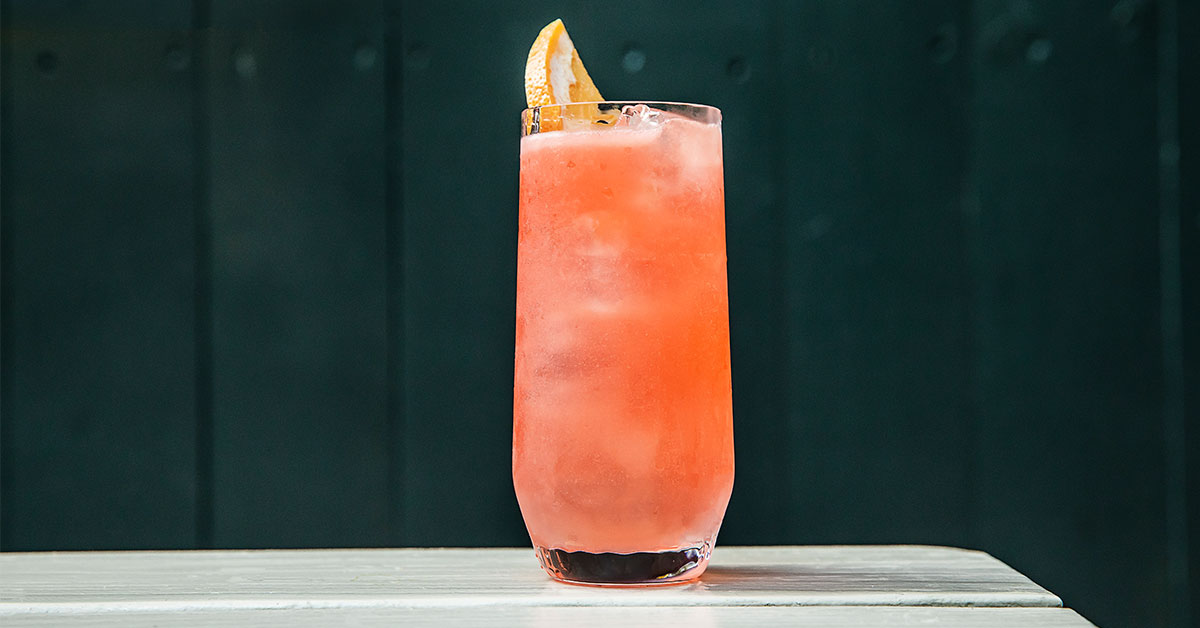
It’s no secret that the modern bartender spends nearly as much time in the kitchen prepping for service as they do serving guests. More than ever, bartenders are drawing inspiration from pastry chefs and cooks, figuring out how to liquify foods and flavors to mix into imaginative cocktails. One of the latest ingredients to make the jump from kitchen to bar is miso, the umami-packed fermented paste commonly made from a mash of cooked soybeans, koji and salt.
In cuisine, miso finds its way into marinades, dressings, broths and even pasta sauces, and as a cocktail ingredient, it enjoys a similar versatility. “I’ve had amazing results blending miso paste directly into sugar-, maple- or honey-based syrups to add a weighted richness and viscosity to classic sours and flips, but also to add complexity to tiki and tropical cocktail builds,” says Brian Evans, director of bars for Sunday Hospitality Group.
One of the easiest ways to begin incorporating miso into cocktail syrups is to start with adding 10 percent of the syrup’s total weight and adjust to taste; depending on the potency of the miso and the desired level of umami, the percentage might increase. These syrups can easily be subbed into familiar templates, but they work especially well in sour-style drinks like the Daiquiri or Gold Rush. At Rule of Thirds in Brooklyn, one of the bars Evans oversees, he augments the tiki classic Navy Grog with a miso-honey mix and mushroom-infused rum. In his Umami Grog, “the infused rum…, citrus and honeyed miso all come together to form a nostalgic flavor reminiscent of baked banana bread,” says Evans.
Part of miso’s appeal lies in its varied forms. Widely available types include the light and subtly sweet white (shiro) miso, earthy red (aka) miso and mildly acidic yellow (shinshu) miso. All of the styles—and even different brands of the same style—yield distinctive flavor characteristics due to varying raw materials and production methods.
“We use a chickpea-rice miso that’s aged for four months in oak barrels, which is made by Meta [Fermentary] here in Copenhagen,” says Michael Hajiyianni, general manager of cocktail bar Ruby, who uses the miso to add umami to a beurre noisette (brown butter), which is then used to fat-wash whiskey for a milk punch called The Fairground. In Hajiyianni’s drink, the salty miso adds depth of flavor and contrasts with the sweetness of the toffee apple; to this blend he adds Jamaican rum, Danish quince wine, lemon and rooibos tea for a robust, fruit-forward punch.
For some bartenders, miso presents a challenge because it can give drinks a cloudy appearance. But at Silverleaf Bar in London, the team creates a layered pineapple-miso caramel, which is then clarified in a centrifuge to maintain the bar’s signature clean, minimalist look in its cocktails. “The technique behind the caramel is something that I have been experimenting with and putting on menus for years,” says Liam Broom, Silverleaf’s bar manager. “I first came across how a pastry chef would make a caramel sauce by cooking sugar to a certain temperature, then deglazing the pan with double cream. I asked myself, If I were to replace the double cream with other liquids of my choice, could I add more complexity to cocktails?”
Broom experimented with various iterations, landing on a caramel made with pineapple juice, but the initial component lacked depth. “The final piece of the puzzle was adding white miso paste to the pineapple caramel,” says Broom. “This final touch added a sweet-salty-umami-bitter complexity to a split-base Old-Fashioned that we married with brown butter and Craigellachie 13-year whisky,” he explains.
For many bartenders, the potential of miso to add complexity to cocktails is only just being realized. “I really do think there’s infinite possibilities in regards to the use of miso in drinks-making,” says Evans. “We’re only currently scratching the surface.”
